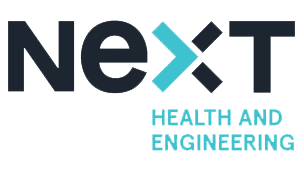Missing 10 Hours - VR against the Bystander Effect
According to the 2021 World Drug Report from the United Nations Office on Drugs and Crime (UNODC), GHB was still one of the most frequently seized sedatives in 2019, exceeding seizures of benzodiazepines as well, with Sweden, the United States, New Zealand, Canada, China and Australia recorded the largest quantities of GHB intercepted. Despite its relevant recreational use, the lay public still primarily considers GHB as a roofie and while dozens of psychoactive substances (including ethanol) can potentially be used to commit sexual assaults, GHB is indeed the most common ”date rape drug”. To prevent such sexual assaults, numerous methods have been developed in recent years - including, for example, drug testing kits providing mostly colorimetric and fluorimetric detection of GHB-, yet the most important protective factor may still be social action against the offender, that is, other people intervene in moments of need. If someone is hurt in a party situation, not everybody acts. People who are present and witness a crisis event but not act (as either the aggressor or victim) are the bystanders. Well-informed bystanders who recognize the relevant cues and know how to act can be a valuable resource of helping potential victims.
The present workshop thus aims to first briefly describe bystander effect and those factors that may influence bystander behavior (e.g., diffusion of responsibility, pluralistic ignorance, spotlight effect and the role of anonymity). These social psychological elements will not be directly presented in a frontal and sterile context of the classroom; however, they will be organically integrated into a virtual reality program in which participants can find themselves in a party situation as a potential bystander. As such, the workshop will also present our ‘Missing 10 Hours - VR project’ against the Bystander Effect. The workshop will give participants an insight into the structure and narrative of the VR programme, as well as the decision points embedded in the story, where the participant can interactively influence the story. At the end of the workshop, a research proposal regarding a future international efficacy study is presented.
We are looking for collaborators and partner institutions both to further develop our VR programme and to implement the future efficiency study at international level.
Contexte
Our workshop will be held online without a pre-defined limit of participants. However, we would like the workshop to be as interactive as possible, including its implementation (e.g. presenting the real functioning of the VR program) and the active participation and feedback of the workshop participants.
Objectifs visés
Having an online session where our potential collaborators could give us valuable feedback would result in more accurate data collection for further development of our project. Based on these feedbacks we would like to tailor the experience to achieve its maximum potential in terms of behavioural change.
The workshop itself will draw attention to the Bystander effect and will involve one trauma survivor to share her experience with the others.
Our primary goal is to find collaborative partners who also see a perspective in VR-based attitude formation.
Démarche mise en œuvre
For further information, please visit the landing page of our project: https://www.missing10hours.com/
https://vimeo.com/726963041/55e533dd74
Ressources mobilisées
Vous pouvez préciser ce qui, selon vous a facilité la mise en oeuvre…
Bilan et perspectives
Vous pouvez dire ce que vous avez pu observer et ce que vous pensez éventuellement modifier…
Ressources


